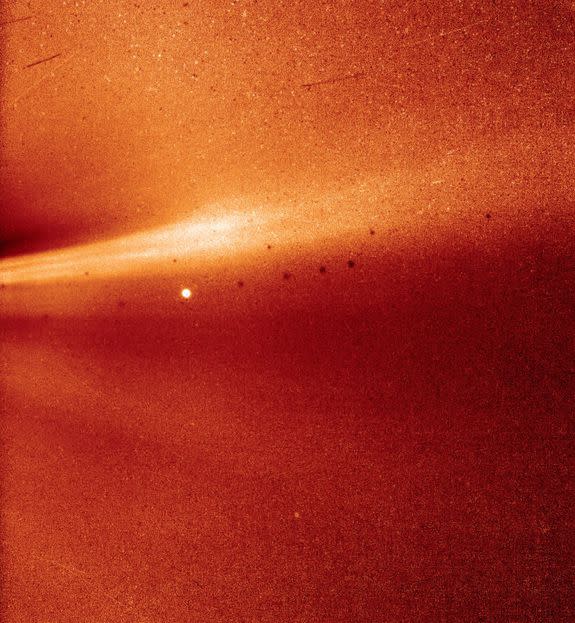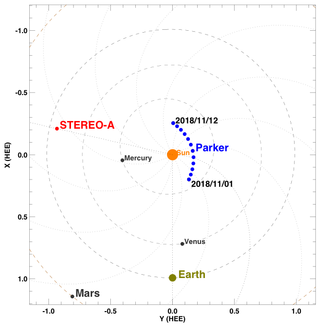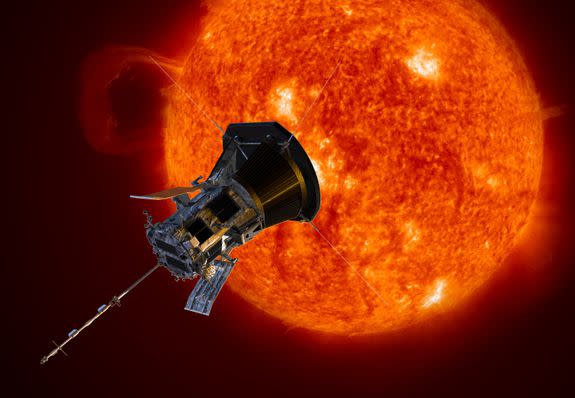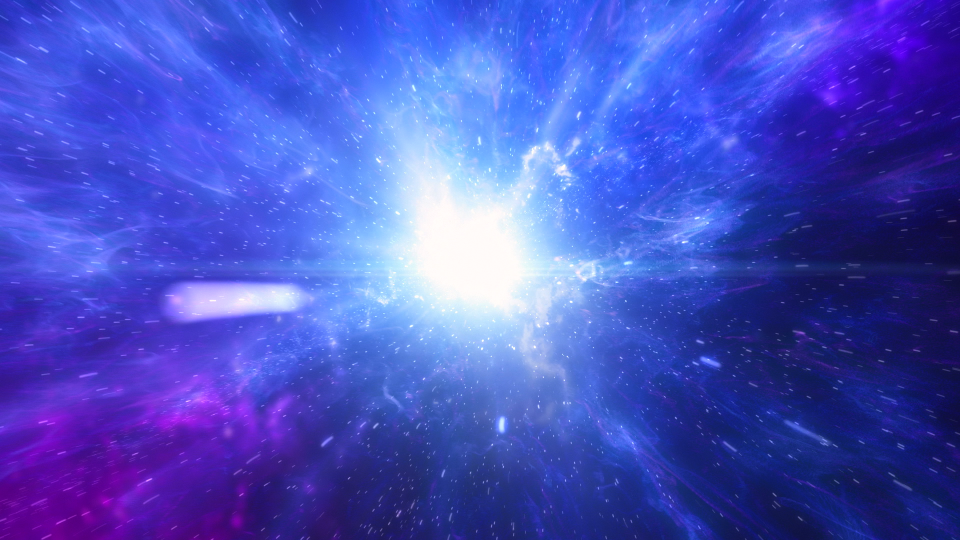NASA probe speeds through the sun's atmosphere, captures scorching photo of Mercury

NASA's Parker Solar Probe recently dove deeper into the sun's atmosphere than any spacecraft before. And it has the photos to prove it.
Launched four months ago, the heavily-shielded probe — an exploration craft that will swoop progressively closer to the sun over the next six years — came within 16.9 million miles of the sun's surface when it captured this orange-tinged image on November 8.
Here, the probe was well inside the sun's corona, or outer atmosphere, a difficult-to-visit place that's still largely a mystery to astronomers.
The dominant part of the scene is a horizontal bright streak emanating from the sun. On November 8, the probe approached this beam of energized particles, called a "coronal streamer," that had been blasted out from our medium-sized star.

Image: nasa
The bright spot in the photo is sunlight reflecting off the planet Mercury, which is millions of miles away from the probe.
Also visible are darker dots beside and just above Mercury. These are photo remnants of both Mercury and Jupiter as both planets orbited in the background as the solar probe captured long exposure shots of the looming coronal streamer.
Although this is one of the first solar probe images to get transmitted back to Earth, NASA will eventually get images of the probe flying directly through this massive blast of energy.
"It's like flying through a snowstorm," Russ Howard, the head scientist for the camera that took the image, said in an interview. "As you get closer to the storm, they [the sun's particles] go above, below, and by you."
"We are going to be flying through it — that’s really exciting," added Howard.

Image: nasa
While the primary image here was taken on November 8, the final product is a combination of images taken about 12 hours apart as the probe traveled through space.
This was necessary, said Howard, because there's quite a bit of dust floating around the solar system, and "averaging" the photos together allowed the team to clear out the unwanted "noise," from the dust in the image.
Ultimately, NASA hopes to understand the highly-energized gases that the sun is constantly emitting into space, known as the solar wind.
These winds are largely responsible for creating "space weather" in our solar system.
"As we send spacecraft and astronauts further and further from home, we must understand this space environment just as early seafarers needed to understand the ocean," explains NASA.

Image: nasa
When it comes to the more concentrated blasts of energy — the coronal streamers — scientists know that they are denser and more slowing moving beams from the sun, but scientists are still largely unsure of how and when they form.
The specialized, military-built camera that took these photos sits behind an eight-inch thick heat shield that protects both the camera and instruments from the brunt of the sun's heat.
During this swoop into the sun's atmosphere, the Parker probe's heat shield experienced temperatures reaching 820 degrees Fahrenheit, though during future, closer passes, temperatures are expected to hit some 2,500 degrees.
WATCH: Ever wonder how the universe might end?


